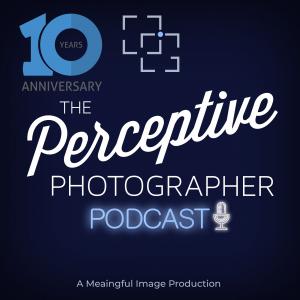The Perceptive Photographer

Learning to Trust Your Eye
In this episode of the Perceptive Photographer podcast, I discuss what it truly means to trust your eye as a photographer. It is a similar concept to reading and writing. When we learn to read and write, we start by copying letters, following patterns, and sounding out words. Over time, that repetition gives us the ability not only to read but to understand and interpret meaning. Photography works in a similar way. Just because we can make a photograph does not mean we can thoroughly read or understand what it says. Learning to trust your eye is about developing that deeper literacy, the ability to see beyond the surface and into the meaning of what draws you in.
In the beginning, most photographers imitate. I have discussed this in a past podcast. And have a whole workshop dedicated to this process. Many of us start to learn by copying others. It might be replicating their techniques or emulating a style we admire. I think it is an important part of the process. It helps teach us the grammar and vocabulary of photography, but only part of that overall language.
Eventually, when we start to wonder why an image that looks “right” still feels incomplete, we begin to recognize that our own way of seeing might be more unique than we gave ourselves credit for. Trusting your eye begins when you start to believe that how you see the world has value, even if it doesn’t look like anyone else’s work.
Your eye is more than composition or technical skill. Trusting your eye is about listening when something tells you this is worth the click. You may not even know why you want to make the click, but trust means noticing what makes you want to click. It could be a particular kind of light, color, gesture, subject, subject matter or emotion. By paying attention to this spark, you can build the foundation of trusting yourself.
For me, the more I trust my eye, the more doubt I can feel. The goal again is to trust in the click and know that as we learn to read and understand our work more because we “trust the process,” our confidence can grow. The act of photographing what feels right, even when you cannot explain why, is how trust develops. Doubt does not go away, but it becomes quieter.
Trusting your eye is not about being right or wrong, good or bad. It is simply realizing that something is important enough to you that you acknowledge it and honor it in the camera. In that way, photography becomes less about proving what you know and more about understanding what you see.






 Visit Podcast Website
Visit Podcast Website RSS Podcast Feed
RSS Podcast Feed Subscribe
Subscribe
 Add to MyCast
Add to MyCast